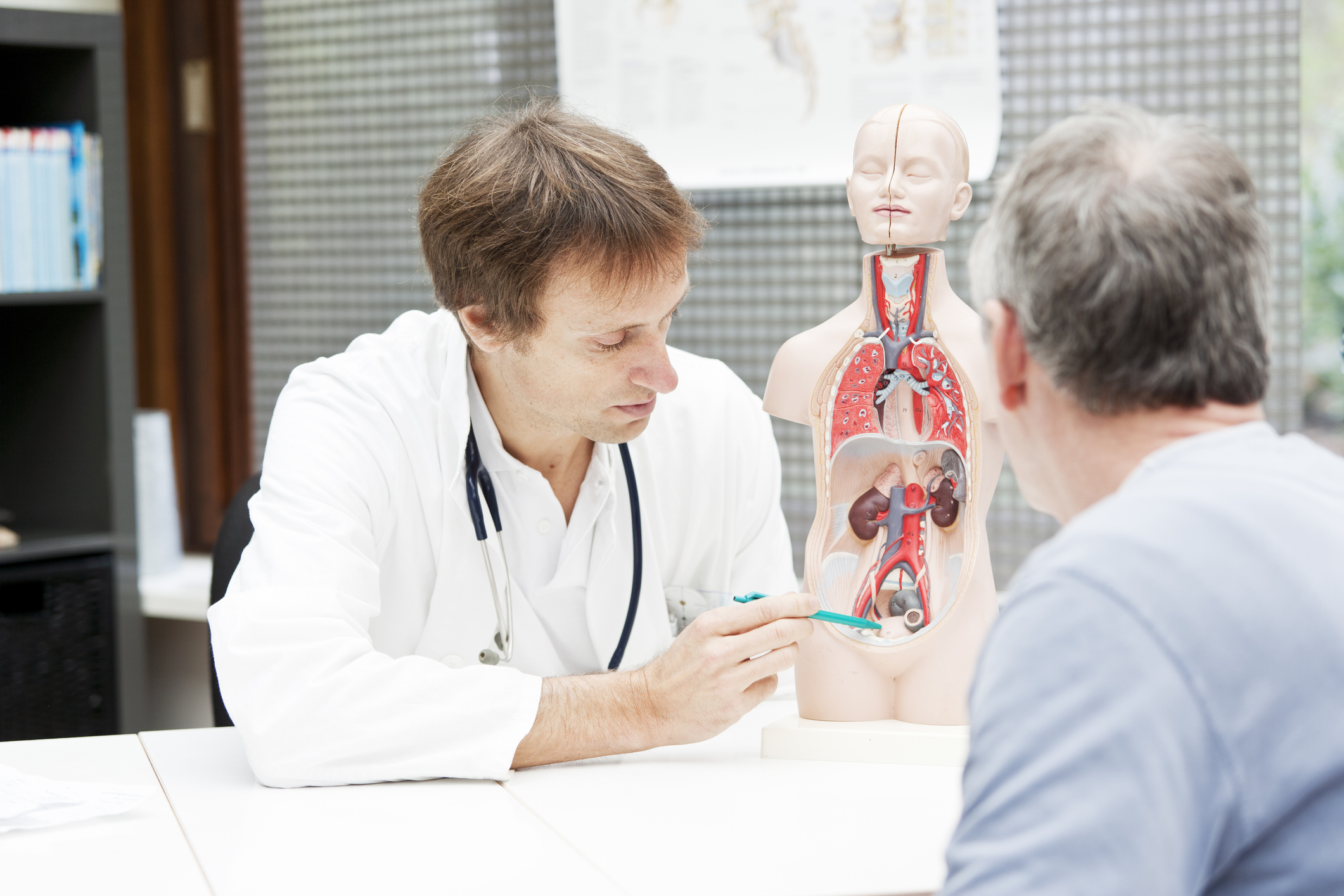
An enlarged prostate, also known as benign prostatic hyperplasia (BPH), is a common condition that affects many men as they age. It is important to understand the symptoms and causes of this condition in order to seek appropriate medical attention and treatment. In this article, we will explore what an enlarged prostate is, the various symptoms associated with it, the factors that can contribute to its development, and the potential complications that may arise as a result.
What is an Enlarged Prostate?
An enlarged prostate refers to the abnormal growth of the prostate gland, which is a small organ located below the bladder and surrounding the urethra – the tube that carries urine out of the body. The prostate gland plays a crucial role in the male reproductive system by producing seminal fluid, which is essential for nourishing and transporting sperm. When the prostate becomes enlarged, it can exert pressure on the urethra, leading to a range of symptoms such as frequent urination, difficulty starting or maintaining a urine stream, and a feeling of incomplete bladder emptying.
While an enlarged prostate is a common condition in aging men, it is essential to monitor its progression and manage symptoms effectively to maintain a good quality of life. Treatment options range from lifestyle modifications and medication to surgical procedures, depending on the severity of the symptoms and the impact on daily activities.
Medical Terminology: Benign Prostatic Hyperplasia
Medical professionals often use the term benign prostatic hyperplasia (BPH) to describe an enlarged prostate. The term “benign” indicates that the growth is noncancerous, differentiating it from prostate cancer. “Prostatic” refers to the prostate gland itself, while “hyperplasia” refers to the abnormal increase in the number of cells. Overall, BPH is a common condition among older men and is generally not a cause for concern in terms of cancer risk.
Anatomy of the Prostate
To better understand an enlarged prostate, let’s take a closer look at the anatomy of this essential organ. The prostate gland is about the size of a walnut and consists of several lobes or sections. It surrounds the urethra and is situated just below the bladder. As men age, hormonal changes can cause the prostate gland to grow larger, leading to the development of an enlarged prostate.
The prostate gland is composed of smooth muscle fibers and glandular tissue, responsible for producing the fluid that mixes with sperm to form semen. Its location near the bladder and the urethra allows it to play a crucial role in the male reproductive system. Understanding the intricate anatomy of the prostate can help shed light on the potential complications that may arise when it becomes enlarged, impacting urinary function and quality of life.
Recognizing the Symptoms of an Enlarged Prostate
Identifying the symptoms associated with an enlarged prostate is crucial in order to seek prompt medical intervention. The following are common signs that may indicate the presence of an enlarged prostate:
An enlarged prostate, also known as benign prostatic hyperplasia (BPH), is a common condition in aging men. As the prostate gland grows larger, it can put pressure on the urethra, leading to various symptoms that affect urinary and sexual function. While BPH is not cancerous, its symptoms can significantly impact a man’s quality of life.
Urinary Symptoms
One of the most common symptom categories of an enlarged prostate involves changes in urinary function. Men with an enlarged prostate may experience frequent urination, especially during the night. They may also have trouble starting or stopping the flow of urine, experience a weak or interrupted stream, or feel a sense of incomplete emptying of the bladder after urination.
These urinary symptoms can be bothersome and disruptive, affecting daily activities and sleep patterns. Some men may also develop urinary retention, a condition where they are unable to fully empty their bladder, leading to discomfort and an increased risk of urinary tract infections.
Sexual Dysfunction
In some cases, an enlarged prostate can contribute to sexual dysfunction. Men may experience erectile dysfunction, a reduced sex drive, or difficulties with ejaculation. These symptoms can have a significant impact on a man’s overall quality of life and may warrant consultation with a healthcare professional.
Sexual dysfunction related to BPH can be distressing and may lead to feelings of frustration and embarrassment. It is important for men experiencing these issues to discuss them openly with their healthcare provider to explore treatment options and improve their sexual health.
Other Physical Indications
Beyond urinary and sexual symptoms, an enlarged prostate can manifest in various physical indications. Some men may experience discomfort or pain in the pelvic region, lower back, or hips. Others may notice blood in their urine or semen, which should be investigated by a healthcare provider.
These physical indications can be concerning and may indicate other underlying conditions that require medical attention. It is essential for men experiencing such symptoms to undergo a thorough evaluation by a healthcare professional to determine the cause and appropriate management.
Causes and Risk Factors of an Enlarged Prostate
Understanding the factors that contribute to the development of an enlarged prostate is essential in order to adopt preventive measures and manage the condition effectively. While the exact cause of BPH remains unclear, several factors have been identified as potential contributors.
Age-Related Factors
Age is one of the primary risk factors for the development of an enlarged prostate. As men grow older, hormonal changes, including fluctuations in levels of testosterone and estrogen, can cause the prostate gland to grow larger. It is estimated that approximately 50% of men over the age of 50 have some degree of prostate enlargement, which increases to approximately 90% for men over the age of 80.
Hormonal Changes
Hormonal imbalances or changes can play a significant role in the development of an enlarged prostate. Testosterone, the primary male sex hormone, is converted into dihydrotestosterone (DHT) within the prostate gland. Excessive levels of DHT can promote cell growth in the prostate, leading to an enlarged gland and subsequent symptoms.
Genetic Predisposition
There is evidence to suggest that genetics can influence the risk of developing an enlarged prostate. If a man has a family history of BPH, particularly in his father or brother, he may be at an increased risk of developing the condition himself. Genetic factors can contribute to variations in hormone levels and the overall structure of the prostate gland, making certain individuals more susceptible to an enlargement.
Aside from age, hormonal changes, and genetic predisposition, there are other factors that have been associated with an increased risk of developing an enlarged prostate. One such factor is obesity. Research has shown that men who are overweight or obese are more likely to experience prostate enlargement compared to those with a healthy weight. This may be due to the fact that excess body fat can lead to increased levels of estrogen, which can contribute to prostate growth.
In addition, certain lifestyle choices and habits can also influence the risk of developing an enlarged prostate. For instance, smoking has been linked to an increased risk of BPH. The chemicals in tobacco smoke can cause inflammation and oxidative stress in the prostate, potentially leading to the enlargement of the gland. Similarly, excessive alcohol consumption has been associated with an elevated risk of prostate enlargement. Alcohol can disrupt hormone balance and contribute to inflammation, which can impact the size of the prostate.
Complications Associated with an Enlarged Prostate
An enlarged prostate can lead to various complications that can significantly impact a person’s health and well-being. Understanding these potential complications is crucial in order to seek appropriate medical intervention and minimize the risk of further complications.
One of the complications that can arise from an enlarged prostate is the increased risk of urinary tract infections (UTIs). When the flow of urine is obstructed by the enlarged prostate, it creates an environment where bacteria can thrive and multiply, leading to UTIs. These infections can cause symptoms such as frequent urination, pain or burning during urination, and cloudy or strong-smelling urine. Prompt medical treatment is necessary to prevent the infection from spreading and causing additional complications.
In addition to UTIs, another complication that can occur as a result of an enlarged prostate is the formation of bladder stones. When the prostate is enlarged, it can contribute to urine becoming concentrated in the bladder, leading to the development of hard mineral deposits known as bladder stones. These stones can cause pain, difficulty urinating, blood in the urine, or frequent UTIs. Treatment for bladder stones may involve medication, lifestyle changes, or surgical intervention depending on the severity of the condition.
If left untreated, an enlarged prostate can also lead to kidney damage. When urine flow is obstructed or incomplete, it can cause urine to back up into the kidneys, leading to a condition called hydronephrosis. This can result in kidney damage or infection if not addressed promptly. Close monitoring and appropriate medical intervention are necessary to prevent the progression of kidney complications.
It is important for men who may be experiencing urinary problems or other related symptoms to understand the symptoms and causes of an enlarged prostate. By recognizing the signs and seeking early medical attention, men can receive appropriate treatment and care, thereby minimizing potential complications. Regular check-ups and open communication with healthcare providers can help ensure early detection and effective management of an enlarged prostate, promoting overall health and well-being.
See More on Video

The Prostate Protocol By Scott Davis The Prostate Protocol is designed for all those who want a natural solution for BPH. The online program can help users to treat BPH. Also, it will address the root cause and prevent a recurrence. You might not expect this benefit from conventional treatments. The program is the outcome of extensive research.